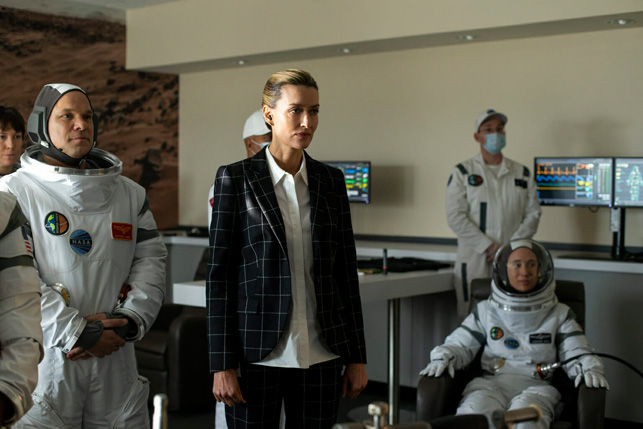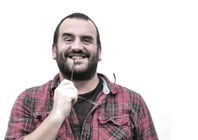As a near-future sci-fi nerd, Al Dean has been geeking out on The First. Will the integration of new technologies be as seamless as is depicted in this stylish TV drama – or will we all still be swearing at Alexa in 2030?

Natascha McElhone and an astronaut team in Channel 4/Hulu’s The First
It’s been a decent couple of years for the movie-loving science fiction nerd, from the return of Deckard’s Blade Runner to The Martian, from Interstellar to Ex Machina. As long-time DEVELOP3D readers might appreciate, I’ve been lapping it up.
In recent weeks, a new obsession has arrived on the goggle box in the corner of the living room. Shown on Channel 4 in the UK (and Hulu in the US, I believe), The First is a drama starring Sean Penn and Natascha McElhone that follows the first human mission to Mars. Set in the near future (2030 is the target date), it has a feel that’s pretty compelling.
Every episode combines the familiar (take, for example, Penn jogging around a slightly downbeat Missouri) with some very subtle near-future technology predictions. This is a Martian space race drama, after all.
What’s interesting is that most of the action (without giving too much away) takes place on Earth. The astronauts’ suits look familiar but the NASA logo is new.
Communications seem familiar, too, but the devices are small, perhaps a wristband or a pair of AR glasses, voice activated with no interface and seemingly entirely ubiquitous.
Here, interactions with technology occur naturally, versus stroking a glass-fronted rectangle or shouting at a glowing cylinder in the corner of your living room. It’s a wonderful thing to behold.
Channel 4 recently posted an interview1 with creator of the series, Beau Willimon, where they discussed how technology is presented in the series and one quote lept out at me: “The question now is how it will integrate into our lives.
The ultimate goal is to have characters use these things in a way that feels totally normal to them. Technology integrates itself into our lives pretty quickly. None of us are looking down at our phones saying, ‘God, look at this magical box!’ It just feels normal to us.”
Beyond the personal, there’s also some curious depictions of transportation, outside of the surprisingly familiar-looking space rockets. Jaguar Land Rover got in on the act to create a believable but futuristic Range Rover for Natacha McElhone’s CEO character.
It looks like your standard Range Rover, but with some body styling changes and autonomous features (including the larger passenger cabin). Interestingly, the same character is also driven around in a variant of DEVELOP3D’s March 2018 cover star, Lucid Motor’s concept vehicle.
All of the vehicles in the series are autonomous except where there’s a specific point to illustrate the story (cue a hurried drive in an emergency, for example.)
This brought to mind some of the more advanced technology we have available to us in our design and engineering software toolset. If you take the example of simulation and optimisation tools, these are often separate processes, and switching between them often requires extra thought, additional effort and a change of mindset, too.
And that’s got me thinking, somewhat wistfully: How much more beneficial would these tools be if we didn’t have to shoulder that additional burden to use them?
https://youtube.com/watch?v=ngl2W_VLp1o

Will new technologies eventually integrate into the everyday as they’re shown in the media?
Default






